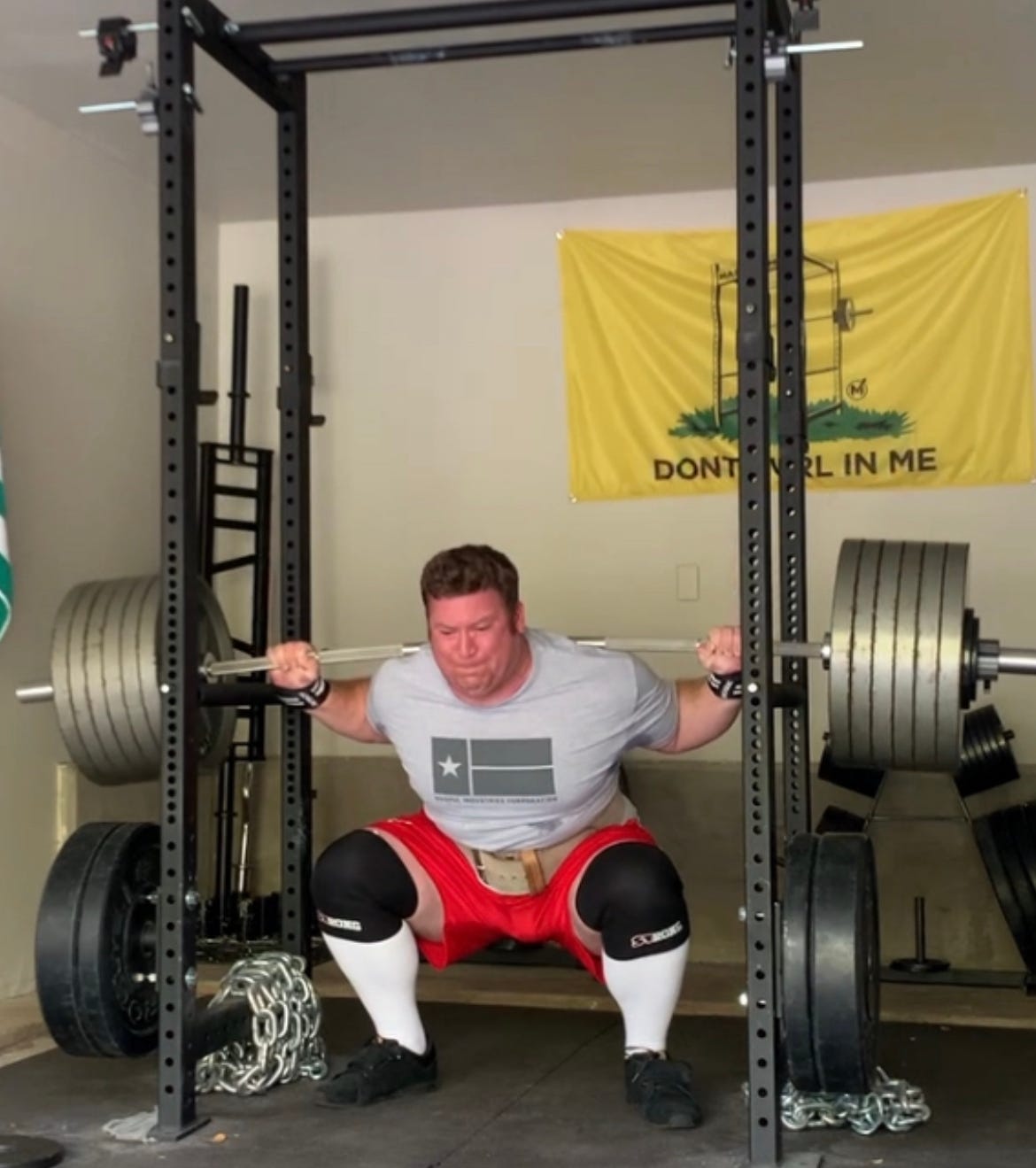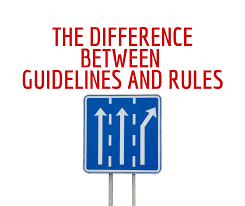The 4 Criteria Revisited: Choosing The Right Exercises - Logic & Observation vs Peer Reviewed Literature
Why we squat, press, deadlift, and bench instead of doing 1-arm cable flyes with our eyes closed
Select Exercises For Success
What do a triathlete, soccer player, and even a bodybuilder have in common? Unlike the popular perception, a good Novice strength program for each of those things, and just about everyone else, looks the same. Build your base with the lifts that allow you to:
Train the most muscle mass
Over the longest effective range of motion (ROM)
Lift the most weight, so that you
Get stronger
This leads us to using the low bar squat to just below parallel, press, deadlift, and bench press as our main lifts - “The Big 4.” With the addition of the chin-up, and the barbell row or power clean a week or two in, and really nothing else at first. This forms the basis of my “Where To Begin?” article for new/prospective lifters that I published a few weeks ago. Of course I highly recommend reading that if you’re looking to start strength training, or have been doing haphazard stuff in the gym and want to get organized and get real results.
The argument for these 4 main lifts, based on these 4 criteria, was first made and popularized by Mark Rippetoe, and still forms the basis by which thousands of people successfully organize their training.
As I wrote in 2018, these criteria are not absolute rigid rules for your entire lifting career, but do provide an excellent framework within which to think about training, and follow to the T for the first few months of your training journey, regardless of long term goals.
Even after those first few months, organizing your supplemental lifts, your accessories, and assistance lifts with these criteria in mind make sense if your goal is to continue getting stronger over time.

The Arguments Against
The two argument I’ve seen most often against this take one of two forms:
Those criteria aren’t perfect to begin with - if they were, we’d always use them forever, regardless of lifter experience and advancement, yet basically everyone concedes that advanced lifters do some type of supplemental and assistance work.
The Big 4 don’t really follow that criteria better than many alternatives. High bar works just as well as low bar. Trap bar works just as well as regular deadlifts. And similar suggestions.
Counter #1: Heuristic vs Absolute Rule
I addressed Objection #1 in my aforementioned 2018 article, so I recommend reading that to get the full scope of my response. But the tl;dr version of it is that those criteria are an excellent heuristic, not an absolute rule, and so they set up a presumptive status that should be followed, but not an absolute rigid rule for all time.
A heuristic is an approach to problem solving that uses a practical method that may not be optimal or perfect, but is sufficient for reaching an immediate solution or approximation. In cases where finding an optimal solution is impossible or impractical, heuristics can be used to speed up the process of finding a satisfactory one. Some might call it a rule of thumb or first approximation.
As a lifter advances and his training needs to be more personalized and complex to keep progressing, reasons to draw slightly outside the lines appear, and sometimes justify not following the criteria as rigidly. However abandoning them altogether is not wise for someone who seeks to continue gaining strength for a long period of time.
Counter #2: The Literature Just Isn’t That Great
As for Objection 2, I’ll give an example of an oft-cited argument of this type, and why it isn’t that great an objection. While I hope to do some future work on why I don’t dismiss real world observation, logical analysis, and actual gym data from trusted coaches when they don’t match the peer reviewed literature, this one can also serve as a good representative example for that whole subject.
Breaking it down
This part of the argument goes something like this: You claim low bar squats better fulfill the criteria than high bar squats, because they use more weight. But in fact, more weight on the bar doesn’t correlate with more motor units utilized, so that isn’t an important criteria and high bar is just as good as low for general strength training.
In the peer reviewed literature, van den Tillar et al published in 2019 their results that increasing weight on a squat did not really correlate with increased muscle activation, so this criteria of “allows us to use more weight,” isn’t even a good one.

Let’s examine this further.
The Subjects
They got 13 resistance trained males with an average of 6 years’ lifting experience, but not competitive lifters, avg age 24, avg size about 5’10” 180 lbs, and must have at least a 1.5 bodyweight squat to participate, with an average 1 rep-max squat of 295 lbs.
My alarm bells already go off at the description of 24 year old men training an average of 6 years and only being 180 lbs at 5’10. They were not weight class athletes, so why were so they light/small after lifting for 6 years? 6 years of dedicated training typically builds a 5’10” body to be heavier than 180, unless very low bodyfat is maintained. Thirteen is also a VERY small sample size to make any generalizations from, to entire populations. And an average 1RM squat of only 295 lbs, after even 1 year of training, much less 6, is quite subpar. As I wrote about last week, even my most genetically challenged lifters squat 315 lbs or more at this point in their training. I worked with an otherwise healthy 26 year old man who, on Day 1, literally could barely do a set of 5 with 55 lbs. His back bowed like a fishing rod and he struggled to get back up with the 5th rep. It was one of the craziest things I’d ever seen in the gym as a coach. Nonetheless, he squatted 255 lbs only 9 months into training and weighing only about 160. He’s since squatted around 365. Why are these 180 lb men, training for 6 years, only squatting 295? There are already many questions just based on the demographics that make this suspect.
What is a “Squat?”
They used the following description of their movement standard as to what constituted a squat:
The free-weight back squat was performed in a power rack (Gym 2000, Modum, Norway) with an Olympic barbell (diameter = 2.8 cm, length = 1.92 m). The exercise started with fully extended knees and a natural sway in the lower back, which was maintained throughout the entire execution. Using a self-paced but controlled tempo, the participants lowered themselves to 80° knee flexion (180° fully extended knee) measured with a protractor (femur–fibula). When the participants had the correct knee angle, a horizontal elastic band was adjusted [20, 21]. The participants had to touch the band (mid-thigh) in every repetition before starting the concentric phase. A test leader gave oral confirmation when the participants touched the band
This is of course not how squats are performed in the weight room, or at least not how they should be. 80 degrees of knee flexion (measured by a protractor - SCIENCE!!!) is probably a half decent proxy for depth, but I don’t know for sure, as no normal person measures it that way. We look for the hip crease to be just below the height of top of the patella, which can be seen very easily with a practiced and trained eye. Why use an odd proxy instead of the well established criteria? Why use a two-factor external validation model, both factors of which may effect the way the lifter performs the actual lift and thus the results - by inserting external factors into the lift - instead of teaching them how to gauge their own depth, and only counting sets and reps that meet this criteria, as determined by the researcher?
I can teach about 90-95% of brand new clients to recognize depth solely by feel within the very first session, so this really isn’t that hard, especially for lifters with 6 years experience who have handled at least 1.5x their bodyweight.
The Protocol
Finally, their protocol:
Before starting the tests using the different loads, 1-RM in free-weight back squat was performed. After the final warm-up set, the load was increased to approximately 95% of the participants’ self-reported 1-RM. The load was then increased by 2.5–5.0 kg until failure. Failure was defined by the following criteria: 1) the participants failed to complete a lift, 2) the participants could not complete the lift with proper technique, or 3) both the participant and the test leader agreed that the participant would not be able to lift 2.5 kg more. The 1-RM was achieved within 2–4 attempts. Each attempt was separated by a pause of 4–5 minutes. After the final 1-RM attempt, a 10-minute pause was given before starting the testing using the different loads. The loads began from 30%, with 10% increments until 100% of 1-RM, which was based on 1-RM achieved by each participant. Importantly, the participants were instructed to accelerate the loads in the entire concentric movement, which resulted in a jump using the lowest loads (i.e. 30%-60% of 1-RM). Two experienced test leaders ensured that the participants did not land with the barbell on their neck. The different loads were randomized for each participant, with random order determined by a random number generator. Two repetitions per load from 30% to 60% were conducted, while from 70% to 100%, 1 repetition per load was performed. A rest of 3–5 minutes was given between each attempt.
In other words, they made them do a 1RM with insufficient rest: 4-5 mins isn’t enough to fully recover, as any advanced lifter who has competed or done 1RM tests can tell you. Then, after fatiguing them with this test, they do let them finally rest enough, but drop the weight and test the “muscle activation” at each of the experimental loads. After fatiguing the hell out of them with a 1RM test. And this is supposed to tell us about muscle activation under normal training circumstances, which certainly don’t resemble this?
Does EMG Equal Motor Unit Activation?
Finally, the assumption that muscle activation as measured via EMG can be assumed a proxy for actual motor unit activation is dubious at best. Even without any counter-evidence, it makes a big assumption that measuring surface activity is a proxy for motor unit recruitment. But there is also reason in the peer reviewed literature itself (Fuglevand et al in 1992 and Farina et al in 2002) to doubt it.

Conclusion
All in all, it doesn’t seem like a very strong argument against our criteria, does it? It falls apart under scrutiny, whereas our criteria are logical and have been used by thousands of people successfully. They may be displaced by better criteria at some point, but as of now have proven very highly useful with a good amount of explanatory power, despite not being perfect.
But this took me over 1100 words to dissect and explain why it’s not a great argument, AFTER taking time to read the paper and analyze it first, the combination of which took well over an hour compared to just a few seconds to say, “The peer reviewed literature says muscle activation at different squat loads isn’t all that different, so using a squat style that allows heavier load to be lifted isn’t very important.”
As the old aphorism goes:
A lie can travel halfway around the world before the truth even gets its shoes on
Not that the claim here is a lie - a peer reviewed study found in the literature does, in fact, claim that more weight doesn’t equal more motor units. A logical implication from that would indeed be that a variation that allows you to use more weight may not be inherently better. But the paper itself, and its implied claim about our criteria, don’t quite hold up to scrutiny as well as the confident assertion would make it seem.
In sum, I claim that while the criteria set out at the start of this article aren’t perfect, and some wisdom is needed to apply them correctly to more advanced lifters, they remain an excellent starting point and heuristic around which to organize your strength training, following them almost to the T when you begin, and still hewing fairly close to them throughout your lifting career.
Questions, comments, disagreements? Ideas for future articles you’d like to see? Drop em below in the comments.




This kind of thing happens a lot and not only these studies are touted as proof “I believe science” but the cottection are often nit very well publicized. Sociology is rife with this stuff. I wish the media were more skeptical, especially about the studies that say something so counter intuitive. Thanks for writing this!